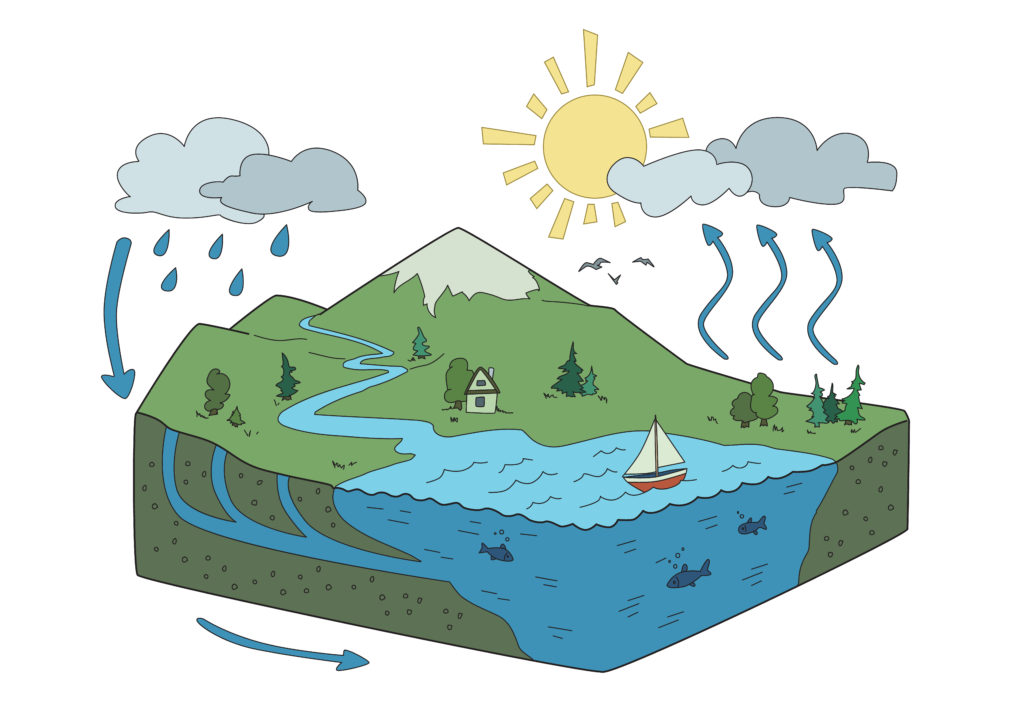Hydrology is a term used to refer to the drainage characteristics of a particular watershed basin or drainage area. These characteristics include the kind of ground cover of the drainage area as well as the overall flow rate for different storm events. Hydrology can be determined for an area of land for existing conditions as well as proposed development conditions.
Hydrology analysis (also sometimes referred to as a hydrologic analysis) is the process involved in determining the hydrology for a drainage area and is a main component of many civil engineering projects.
Where Hydrology Analysis Is Used
Since one of the main goals of hydrology is to calculate stormwater flow rates, hydrology analysis can be used in a couple of different ways within a civil engineering project.
One of the most common places where you would find hydrology analysis being used in civil engineering is in the design of a stormwater management system. Figuring out the hydrology for a proposed land development requires knowing the pre-development flow rates and post-development flow rates so that the site designer knows how to design something to manage stormwater properly.
Another common place where hydrology analysis is used is in the design of the storm drainage system for a new land development. Flow rates have to be calculated for each new storm drain to properly design the storm drains and the associated storm sewer pipes.
Hydrology analysis is also required for determining flow rates that would have to be used in a floodplain analysis in figuring out water levels that would occur for certain storm events in the waterways being studied.
Factors That Affect Hydrology
The main component of a hydrology analysis is the ground cover of a drainage area. Someone preparing a hydrology analysis will usually consider all of the various types of ground cover to determine flow rates that properly represent the drainage area.
This is because some ground cover areas such as meadow and grass are more pervious to rainwater than other areas such as gravel and certain types of farmland. Many areas will also include ground cover such as driveways and roads that is considered impervious area.
Another factor to consider in a hydrology analysis is the slope of the land since steeper land slopes will tend to generate higher amounts of stormwater runoff than flatter slopes.
In calculating stormwater flow rates, the total length of the main flow path of the drainage area may also be something that has to be considered.
Where to Find Hydrology Information
Hydrology information for a stormwater management system design, a storm drainage system design, or a floodplain analysis can normally be obtained by the civil engineer who prepared the design.
There should be an engineering report available (either from the design engineer or the municipality that approved the project) that would contain hydrology information for a project such as drainage areas, ground cover descriptions, and flow rate calculations.
An Important Part of Civil Engineering Design
As an important part of a civil engineering design, one of the first steps of the proper design of something involving stormwater runoff is to figure out and analyze the hydrology for a site. Knowing the correct hydrology for a site allows for the rest of the project to be designed properly.
Related: Recommendations for Hydrology Books



